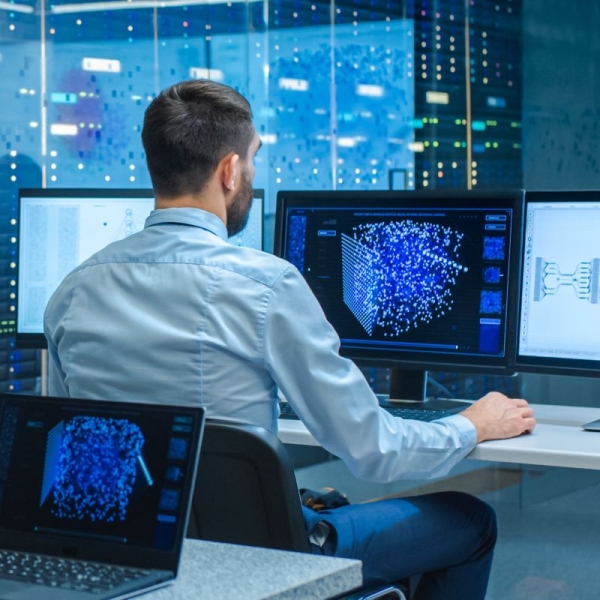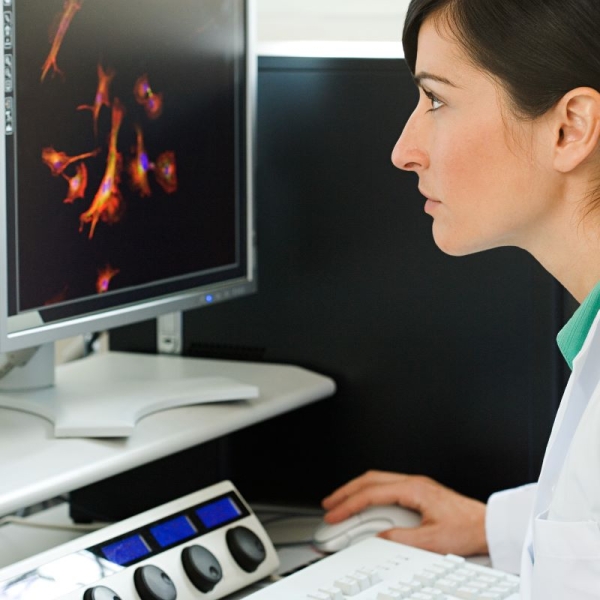Contents
16 Aug 2024 — Technology advancements pave the way to enhance the efficacy of proteins through enzymes — proteins that transform physical matter. Novel computational and experimental tools and AI enable enzyme innovation for optimal human health and sustainability. We discuss the potential of these tools with Justin Siegel, professor at the Genome and Biomedical Sciences Facility of the University of California Davis, US, and co-founder of several food tech start-ups.
“By introducing these technologies, we can come up with ‘no compromise’ solutions across every major agricultural system. Protein is the tip of the spear,” Siegel tells Nutrition Insight.
He co-founded the food biotech company Digestiva. This company discovers and develops proprietary enzyme ingredients to amplify the power of protein nutrition in foods and supplements, creating “precision protein digestion for optimal health.”
“This is not the first time anyone has done this,” he notes. “Back in the 60s–70s, there was a Nobel Prize practically every year in the food system for vitamins, minerals and micronutrients.”
Currently, there is a multi-trillion-dollar industry around vitamins and minerals. However, Siegel cautions that these nutrients “make up 1% of food,” with the remaining 99% consisting of macronutrients such as fats, proteins, carbohydrates and fiber, which have not been researched to the same extent.
He highlights a “huge opportunity” to redo what was done for vitamins and minerals for proteins, fibers and carbohydrates. “We can do that now because of the tools and technologies.”
Development on these macronutrients halted because it was “impossible to measure them, and it was impossible to manipulate them rationally and precisely.” This can be achieved through advances in computation, genetics and analytical technologies.
Enzymes 2.0
Improving the efficacy of proteins through enzymes is what launched Siegel’s start-up Digestiva. The company’s first precision protease enhances proteins’ processability, nutritional quality, digestibility and bioavailability.
“Traditionally, we’ve asked a person to change or the agricultural system to change. Usually, the person has to compromise for a more sustainable option, or the agricultural system has to compromise for something less desirable or make the most sustainable and efficient thing, but that is not desirable. Finding something more sustainable, desirable, cheaper and tastes better is rare.”

Digestiva’s precision protease enhances proteins’ processability, nutritional quality, digestibility and bioavailability, crucial for plant-based proteins.Before launching Digestiva, Siegel says the team searched the world for different enzymes with the exact capability to enhance protein digestion. “We tested many enzymes and discovered one in the hot springs of Kumamoto, Japan. There is a long history of people going there and drinking the water to improve digestion.”
Siegel notes Digestiva is “the tip of the spear” regarding enzyme advancements. People might have considered these issues for a long time but didn’t have the tools to implement them.
He adds that companies in the 80s and 90s revolutionized the food system and the world through enzymes, which are now large multinational businesses. “When they started, their whole business models and frameworks were built around the 80s and 90s technologies and advances in compute (computational power), analytical, chemistry and genetics are moving at unprecedented levels.”
“But it is possible today, because of the advancement of these tools, in a consumer-friendly way that fits with the system. We’re not saying, ‘Hey, let’s go make this GMO-based system that people are concerned about,’ but let’s do this in a way that fits the consumer’s desire and framework.”
Catalyzing chemical reactions
Enzymes transform physical matter, explains Siegel. “It’s nature’s primary and preferred mechanism to transform all physical matter on the planet.”
“Every element of your body, the tree, every piece of fish, all of that, what you eat or they eat or bring carbon dioxide in, that’s transformed into physical material through a cascade of enzymes,” he adds. “Enzyme is the protein that catalyzes that specific reaction.”
Protein is a set of amino acids connected “like pearls on a string,” Siegel continues. Although there are more amino acids, protein generally consists of 20 amino acids. Their sequence in a protein creates a different meaning and function.
“The average protein has 400 of these amino acids strung together. The biggest ones in the world have 80,000, and the smallest ones are in the few dozen.”
The total options for an amino acid string in a protein would thus be “20 times 20 times 20 for 400 times,” he details. “That equates to, to simplify the math, 10 to the 400th. To put that in context, the number of stars in the observable universe is 10 to the 20th. It’s beyond astronomical.”

Advances in genetics and analytical technologies, such as compute, have opened up the exploration of enzymes.In addition to an enzyme’s structure and sequence, scientists need to determine and map its function.
Power of AI
At the same time, advances in genetics and analytical technologies over the last 20 years have opened up the exploration of this space, such as compute. This enables AI models to process large amounts of data, perform complex calculations and make intelligent decisions by learning from the data.
“You cannot explore that space efficiently without compute,” says Siegel. “You need something with a robust starting point to evolve and step toward the end product, and it takes a good amount of effort to get there. Compute helps you get to that first step, and then you can do evolution to optimize it for your specific needs or, though we aren’t there yet, one day we’ll have enough data and algorithms where you go straight to the final step.”
“To put it in perspective, in the last six months alone, there’s been US$6 billion invested in that question by the private sector. When you look at where AI is being applied, it’s applied to natural language processing, image and video generation and protein biotechnology. Investments in this area are just as heavily as these other sectors.”
He illustrates that AI’s first big breakthrough was in this space, “figuring out what protein folds into.”
Control over biological processes
Siegel underscores that some biological processes are not specific while others are ultra-specific. “Nature’s learned how to harness that control, and now we’re starting to.”
Humans evolved to be generalists, needing to get as many nutrients out of all food consumed, whatever that was, as “we never knew what we were going to eat the next day.” Siegel explains that, as a result, “we can’t be the world’s best at corn zein, pea protein and beef protein.”
“But now, we have an opportunity to be the best at everything because we can make these precision tools. There should be no compromise; we should make a pea protein that delivers as many equivalent nutrients as possible. Let’s try to outperform the beef protein.”

Siegel underscores that Digestiva can enable getting as many nutrients as possible out of protein for sustainability and human health.“The only nutrient more important than protein is water,” he asserts. “It’s crucial that we get as much out of that as possible.”
Siegel explains that enhancing protein intake has multiple benefits, including optimizing human health, improving sustainability and improving the efficiency of existing unit operations and processes in commercial efforts.
Product applications
Digestiva recently raised US$18.4 million after closing its Series A equity financing round. The company entered an exclusive manufacturing partnership with Magdalena, which will facilitate the scale-up of the enzyme production. Digestiva aims to commercialize applications in pet food, animal feed and human nutrition.
The company is determining the best applications for its enzymes, which also depend on the cost structure of increasing the efficacy of a specific protein. Siegel notes that the company’s enzyme ingredients can be applied to many mechanisms.
“It could be in the processing of the food, it can be an integrated ingredient into the food, it can be a supplement to the food. There are many mechanisms where you can achieve the same goal.”
“In my perspective, and I’m biased on this, there is no protein on earth that couldn’t and shouldn’t benefit from Digestiva. If humanity is using a protein, from a pure sustainability and human health perspective, we should maximize the utilization of that resource. Digestiva will enable that,” he concludes.
By Jolanda van Hal

